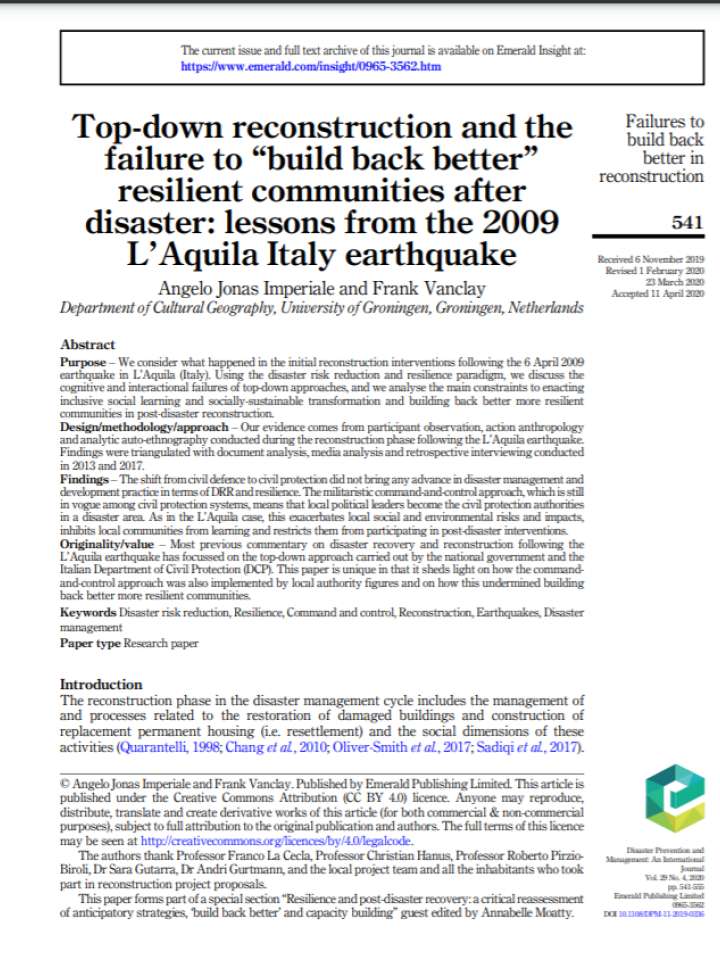Top-down reconstruction and the failure to “build back better” resilient communities after disaster: lessons from the 2009 L’Aquila Italy earthquake
We consider what happened in the initial reconstruction interventions following the 6 April 2009 earthquake in L’Aquila (Italy). Using the disaster risk reduction and resilience paradigm, we discuss the cognitive and interactional failures of top-down approaches, and we analyze the main constraints to enacting inclusive social learning and socially-sustainable transformation and building back better more resilient communities in post-disaster reconstruction. Our evidence comes from participant observation, action anthropology, and analytic auto-ethnography conducted during the reconstruction phase following the L’Aquila earthquake.
Findings were triangulated with document analysis, media analysis, and retrospective interviews conducted in 2013 and 2017. The shift from civil defense to civil protection did not bring any advance in disaster management and development practice in terms of DRR and resilience. The militaristic command-and-control approach, which is still in vogue among civil protection systems, means that local political leaders become the civil protection authorities in a disaster area.
As in the L’Aquila case, this exacerbates local social and environmental risks and impacts, inhibits local communities from learning, and restricts them from participating in post-disaster interventions. Most previous commentary on disaster recovery and reconstruction following the L’Aquila earthquake has focussed on the top-down approach carried out by the national government and the Italian Department of Civil Protection (DCP). This paper is unique in that it sheds light on how the command and control approach was also implemented by local authority figures and on how this undermined building back better more resilient communities.
Explore further

